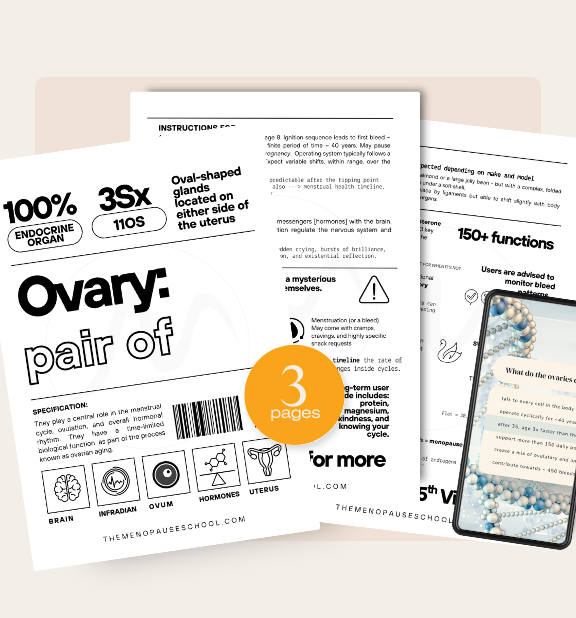Ovaries are made for more
Prefer to read it later? Download a copy of this article HERE (no email required)
The Whole-Body Story of the Ovaries
Holistic professionals often focus on digestion, energy, skin, sleep, or emotional balance - yet miss one of the most influential systems quietly shaping all of it: the ovaries.
They are not background players. They are daily broadcasters, sending hormonal signals through every organ system. And if you work with clients who menstruate, you are already working with the ripple effects of ovarian activity - whether you know it or not.
🔍 The usual story
Most people, including many in health and wellness, have been taught to see the ovaries through a narrow lens:
They “switch on” at puberty.
They “shut down” at menopause.
Their main job is reproduction.
It’s neat. It’s simple. And it’s wrong.
🧠 The real story
The ovaries are endocrine organs with a full-body remit. They talk to the brain every day, influencing mood, digestion, immunity, metabolism, pain sensitivity, and recovery.
Here’s what surprises professionals when they learn more:
The ovarian rhythm is an infradian rhythm - a pattern measured in weeks, not hours.
Hormone patterns, not just levels, drive many signs and sensations your clients experience during their menstrual cycles.
What’s happening in the ovaries today will be reflected in tissues, systems, and moods tomorrow.
🌀 Ovarian rhythms vs “hormone levels”
Your clients may come in talking about low oestrogen because that’s the headline they’ve read. But what they often need is reassurance - and someone to listen to and help them understand their ovarian rhythm.
Why? Because many of the changes they feel are rooted in the pattern of hormone signals and their individual sensitivity to change, not the absolute amount in circulation.
And when those rhythms shift, for whatever reason (stress, diet changes, age) the ovarian activity can take 90-days to recover. Plus there’s the total physiology effect of ovarian hormones.
(You’ll see exactly what I mean inside the download you can grab below ⬇️ )
✨ Why this matters for your practice
When you start to notice and interpret ovarian rhythms, you can:
Link symptoms that seem unrelated.
Adapt your treatments to match hormonal phases.
Spot changes early, before they escalate.
Give clients language for what they’re feeling - so they feel heard, not dismissed.
📥 The quick-read to keep on hand
The Ovary User Manual is a short, sharp, 3-minute read designed to:
Give a snapshot of the ovaries’ physical features, functions, and rhythms.
Present biology in a playful but precise style, with quick facts, cues, and memorable phrasing.
Surprise professionals who thought they already “knew” about the ovaries.
Hint at the bigger menstrual health timeline without unpacking it all.
Think field guide meets quick-reference card. Skim it once, and you’ll start spotting ovarian clues in your clients the very same day. Scroll down to grab a copy now!
If you are interested in learning more about The Menopause Doula Training course click HERE
If you join before the end of August there’s a 20% off coupon code: AUG20



